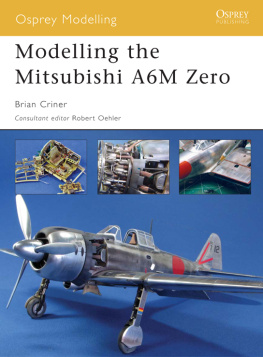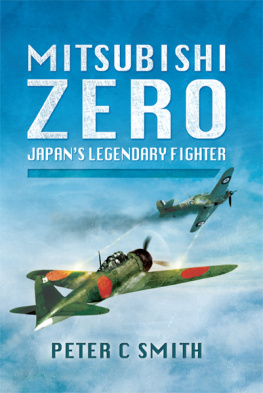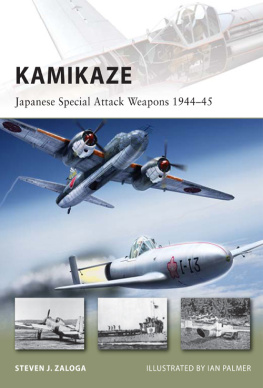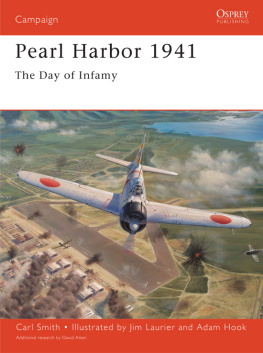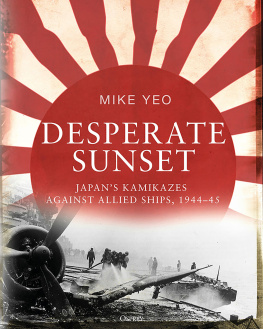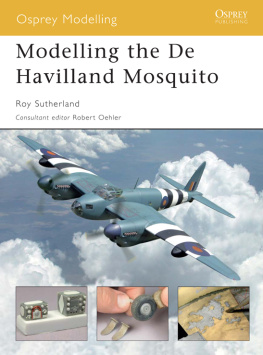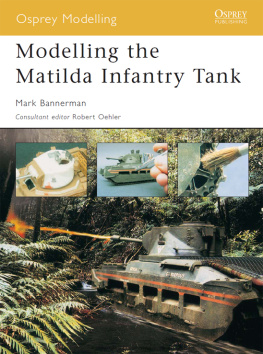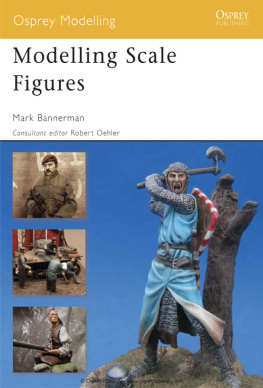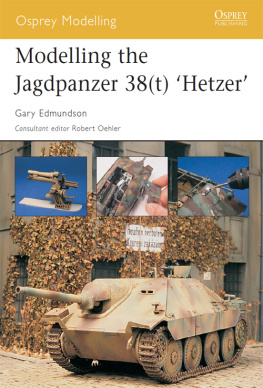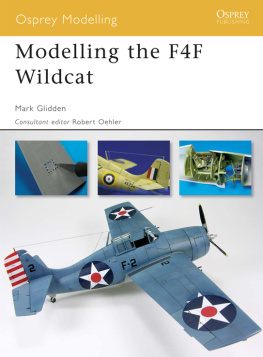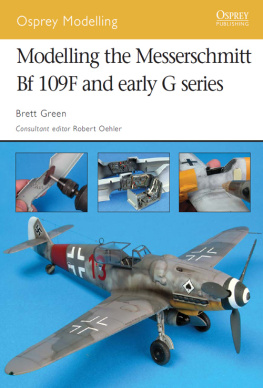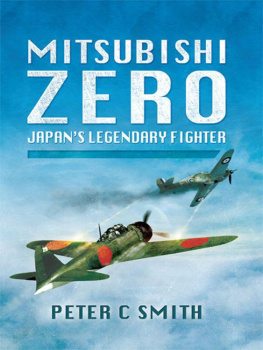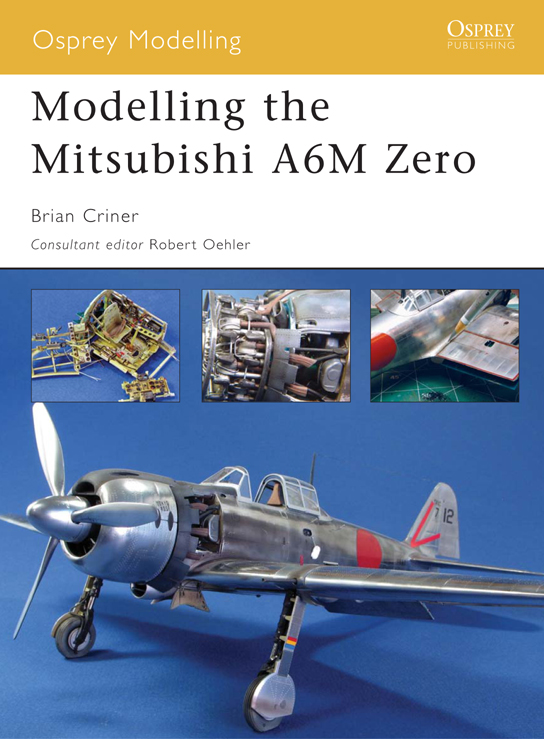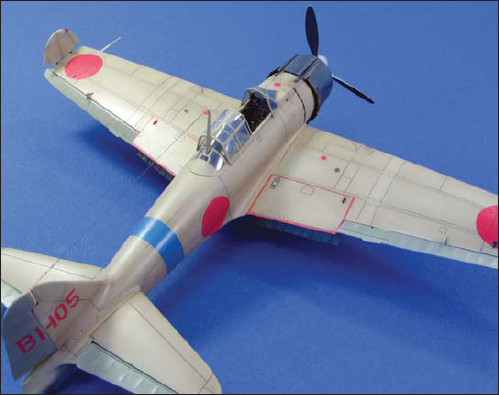Osprey Modelling 25
Modelling the Mitsubishi A6M Zero
Brian Criner
Consultant editor Robert Oehler Series editors Marcus Cowper and Nilcolai Bogdanovic
Contents
Introduction
The goal or objective of this book is to demonstrate a variety of techniques intended to enhance your Zero modelling. It is not intended as an authoritative resource on the Zero. For anyone interested in historical accuracy when building the Zero (or any other Japanese aircraft type), I recommend the www.J-aircraft.com web site. Ryan Toews, Greg Springer, James Lansdale, Jim Long and David Aiken, among others, are all much more knowledgeable concerning Zero accuracy than I could ever hope to be. They can easily be contacted through the message boards, and most will respond promptly to any question you might have. There will be, no doubt, many mistakes of accuracy in this book for which I apologize in advance. Unfortunately, some subjects, such as the Zero, remain enigmatic to modellers and history enthusiasts. Almost all examples of this beautiful, elegant aircraft were destroyed at the end of the war, as were most references, engineering diagrams and plans. Much of the information available on this plane has been only recently uncovered.
Both a love for history and a love of art brought me to this hobby. But the love of art came first. So, I try to make sure I have satisfactorily investigated my subject before starting to build. I have seen people fuss over the details of a single build for years; I respect the love of detail and the skill of these people. However, I encourage all model junkies out there to occasionally do a quick, out of the box build. You will be amazed at how satisfying it can be to simply build and paint a model without re-engineering the thing. I see this as a hobby; when it becomes a burden due to the need to satisfy the expectations of others, then it is time to sell off the stockpile of kits and find something new to do.
Modelling is an art form. Like any form of art, motivation comes from inspiration. Art is not regulated by rules; that is, the objective of art is to please the artist, not necessarily the observer. Unfortunately, because of a plethora of experts some modellers today feel the need to model to a particular standard. Many modellers feel bound to the consensus opinion on accuracy or painting or weathering. Personally, I dont think people should feel compelled to make their model 100 per cent authentic. I think most people are satisfied with a model that looks and sits right. Out of the box building, or assembling as some modellers have called it, is often condescended to. Realistically, not all modellers have the time, patience or interest necessary to scratchbuild their subject. Ultimately what keeps an artist interested in their subject is how the subject looks to them. Of course, our hobby does have the obvious connection to history and there ought to be some constraint between ones whims and reality. In the end, an artist must be able to look at their artwork and find some intrinsic beauty in what they have created. I believe the two goals, accuracy and appeal, can and do intersect.
Historical overview of the A6M Zero-sen
The A6M Rei Shiki Sento Ki, or Rei-sen (meaning Type Zero fighter, or, Zero) was an aircraft that, according to some accounts, had near mythical performance qualities. The aircraft was a result of a request by the Imperial Japanese Navy for a low-wing monoplane with superior speed, range, climb and manoeuvrability. The aircraft performed so well, the military leadership in Japan insisted on its use in combat before performance trials had been completed. The aircraft thus began its long and distinguished career as fighter cover for bombers attacking Chungking in August of 1940. Though the aircraft met no enemy in the skies that day, the pilots of the fighter were ecstatic about their new mount. Not until the fourth mission was the aircraft truly tested though. On September 13, during another bomber escort mission to Chungking, the Zero finally met the enemy. In the end, the Zero, without a single loss, shot down 27 Russian-made I-16s. Further embellishment of the Zero legend came from an American observer in China, Claire Chenault, leader of the famous Flying Tigers. He was so impressed with the new type that he sent off urgent messages to Washington, warning them of the abilities of the new fighter. Washington largely wrote off Chenaults warnings as hysteria and exaggeration, but was proven wrong in a most embarrassing way on December 7, 1941, when the Japanese Navy sent waves of bombers and torpedo planes escorted by Zeros to attack Pearl Harbor. Interestingly, it is likely that the superior performance of the Zero heavily influenced Japans decision to go ahead with the attack on Pearl Harbor.
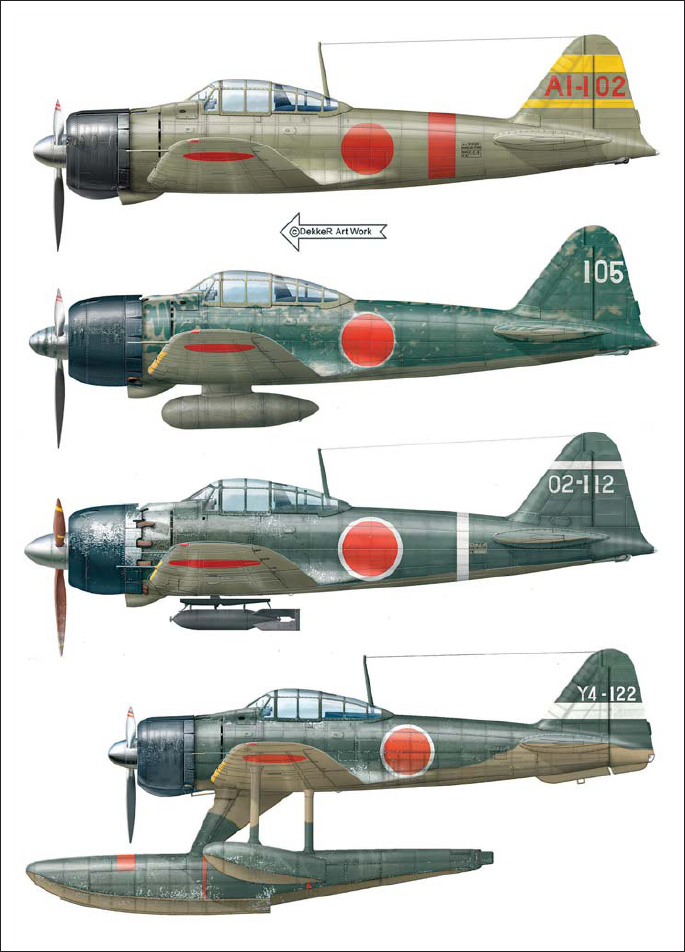
Thierry Dekkers profiles of four Zero variants. (TD)
During the course of the war, the Zero proved itself to be a versatile and deadly adversary. None of the early Allied fighters could match the combat performance of the Zero. There is even a story of some Spitfire pilots that had been transferred from the ETO being given the warning never attempt to turn with a Zero. The pilots, over-confident in regard to the abilities of their aircraft, chose to ignore this advice and were decimated. Eventually, the Allies learned their lesson. With the development of newer, more powerful fighter types by the US and Britain, as well as new tactics that negated the Zeros strengths, the Zero began to show its age. Engineers tried to improve the speed and performance of the Zero by redesigning the wings and fuselage, and by selecting newer, more powerful engines. Designers also recognized the importance of improving the Zeros and the pilots survivability by adding armour to the plane. However, the increased weight reduced its overall performance. In the end, the Zero was fodder for the waves of American fighter planes swarming over Japan, though in the hands of a skilled, experienced pilot (which was rare by wars end) it was still lethal. Ultimately, with Japan facing certain defeat, the final solution selected by the Japanese military leadership to defend their honour and stave off final defeat involved the use of suicide tactics. Throughout the kamikaze campaign at the end of the war, the Zero was the most common aircraft type used.
Only a few airworthy examples of the Zero remain, and of these only the A6M5 owned by the Planes of Fame museum in Chino, California possesses an authentic Sakai radial engine.
This will change with the completion of the A6M3 being built by Vintage Aircraft Ltd./Evergreen Aviation Museum in Ft Collins, Colorado.
Tools of the modeller
Having the right tools can instantly make your models better, and the ones that I consider essential are listed below.
Airbrush choice will make a dramatic difference in the quality of a paint job. More important, though, is the painters willingness to practise. Learning how to use your airbrush, knowing its strengths and weak points, will help you avoid time-consuming mistakes. I prefer double-action airbrushes because I like to be able to instantly control the mixture of air and paint. I know a number of outstanding modellers that prefer single-action airbrushes. The Paasche VL is what I have always used for my airbrushing. Iwata, Badger, Testors and Tamiya all make excellent airbrushes, though the differences in price can be wide. Consider your purchase of this tool carefully. You may save money buying a cheaper airbrush, but your final result can be dramatically different depending on the kind selected.

